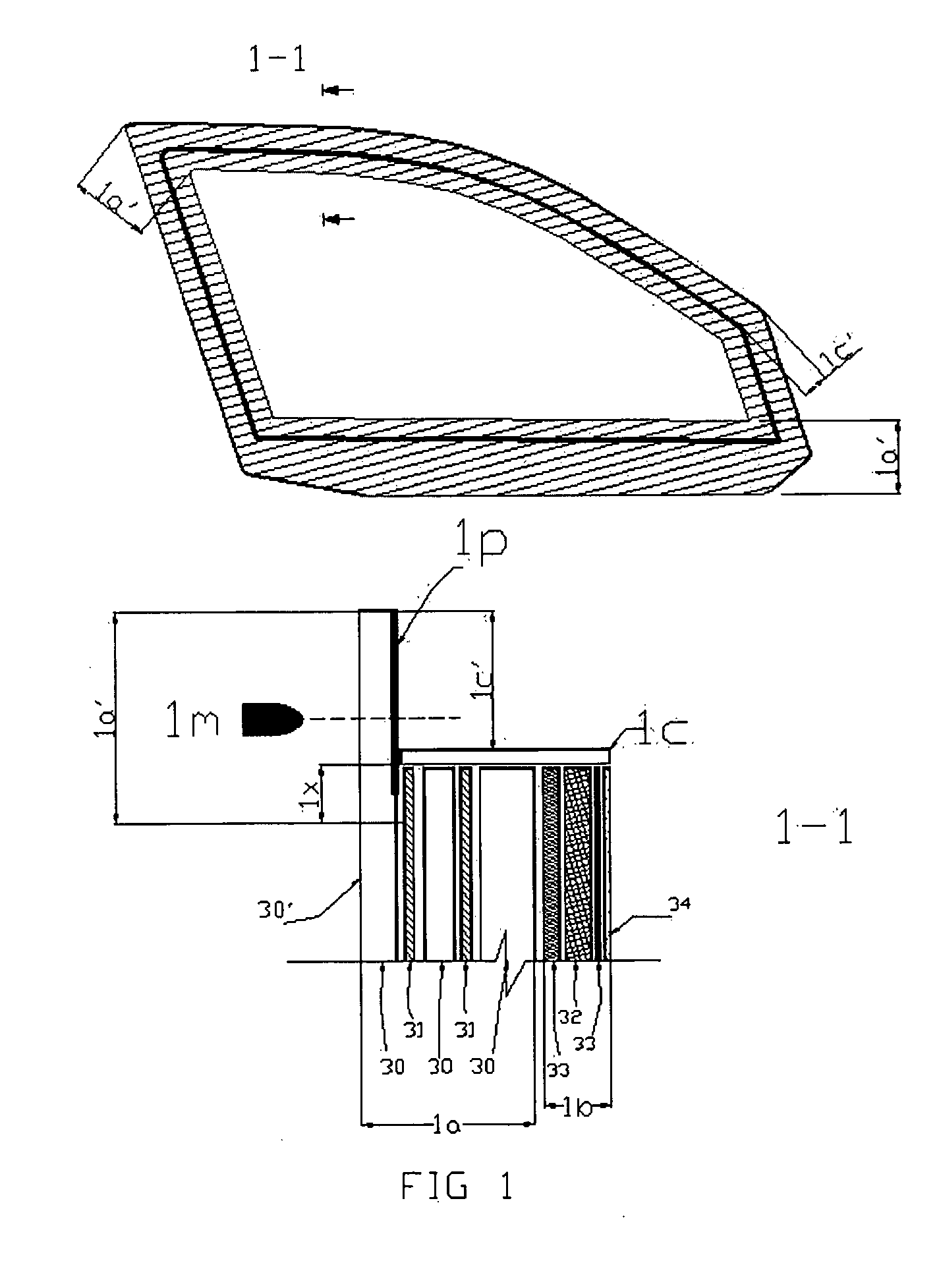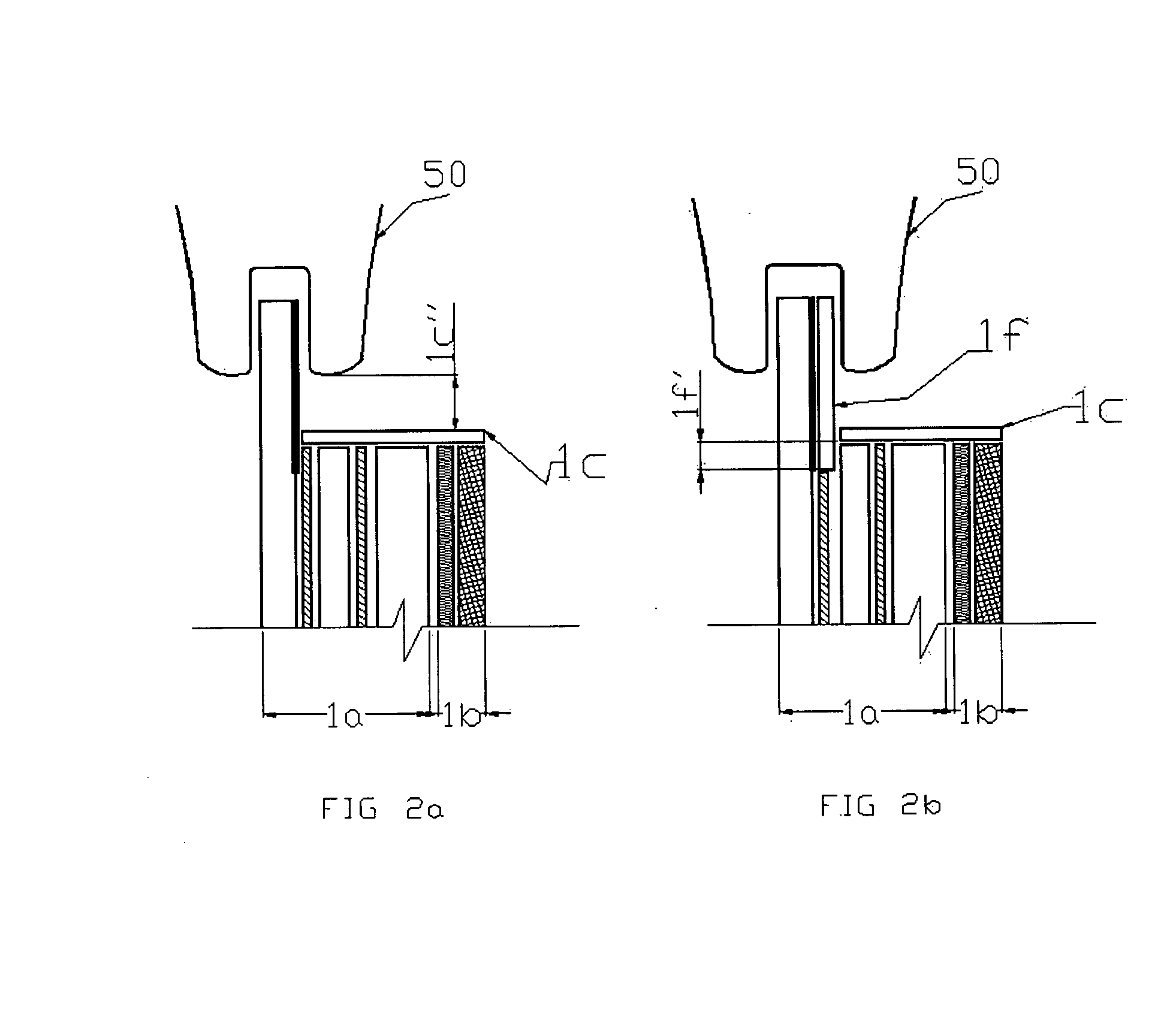Armored Glass Composition with Perimeter Reinforcement
a technology of armored glass and composition, applied in the direction of protective equipment, layered products, weapons, etc., can solve the problems of generating internal stresses at the interface between the painted area and the glass, not providing a complete solution to the ballistic weakness problem, and not offering total protection of the protected space, so as to achieve effective ballistic protection and effective ballistic solution
- Summary
- Abstract
- Description
- Claims
- Application Information
AI Technical Summary
Benefits of technology
Problems solved by technology
Method used
Image
Examples
Embodiment Construction
[0041] Within an armored glass composition, each one of the differentiated sets in FIG. 1 has a specific function from a ballistic perspective. The first set 1a, comprised of a series of glass layers bonded together by the use of polymeric adhesives, works as a set which absorbs the greatest amount of projectile energy. This is the result of the increased hardness of the different glass layers 30 and the elastic capacities of the layered set which form these glass layers together with the polymer adhesives 31 which unite them. The second set 1b, primarily comprised by an impact energy absorber (IEA) element 32 which in most cases is a polycarbonate layer, and by the adhesives that are used to bond this IEA to the first set 1a, has the function of a highly elastic body which absorbs projectile residual energy which did not dissipate in the first set 1a. Hence, deformation (strain) of the second set 1b before projectile impacts may be several times greater compared to the first set 1a...
PUM
| Property | Measurement | Unit |
|---|---|---|
| height | aaaaa | aaaaa |
| penetration distance | aaaaa | aaaaa |
| distance | aaaaa | aaaaa |
Abstract
Description
Claims
Application Information
 Login to View More
Login to View More - R&D
- Intellectual Property
- Life Sciences
- Materials
- Tech Scout
- Unparalleled Data Quality
- Higher Quality Content
- 60% Fewer Hallucinations
Browse by: Latest US Patents, China's latest patents, Technical Efficacy Thesaurus, Application Domain, Technology Topic, Popular Technical Reports.
© 2025 PatSnap. All rights reserved.Legal|Privacy policy|Modern Slavery Act Transparency Statement|Sitemap|About US| Contact US: help@patsnap.com



